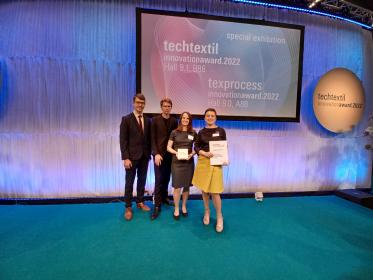Kelheim Fibres wins Techtextil Innovation Award
The viscose specialities manufacturer Kelheim Fibres has won the Techtextil Award in the "New Concept" category for their project "Cellulose-based nonwovens for highly absorbent reusable products".
This award is intended to make cutting-edge developments visible, promote unconventional thinking and intensify the dialogue between researchers, manufacturers.
The starting point for the innovation was the search for a washable and thus reusable absorbent pad made of completely bio-based materials for the cloth diaper of the Berlin-based start-up Sumo.
Two main requirements of the application are obvious: A fast and efficient liquid distribution and high absorbency should minimise rewetting and leakage. Both are ensured by speciality viscose fibres from Kelheim, which have been making this essential contribution to absorbent hygiene products such as tampons for many years. The obvious solution was therefore to optimally utilise the synergies between knitted and woven structures with nonwovens.
In doing so, the advantages of nonwovens in combination with speciality viscose fibres in terms of absorbency (through e.g. more open-pored structures) have been perfectly transferred from the field of disposable to the world of reusable products. For reusable products, however, there is another challenge to overcome: they must remain stable during washing and over several cycles of use. To ensure this, an innovative nonwoven construction was developed in close cooperation with the STFI. These nonwovens can be used as a stand-alone solution or integrated into a textile structure.
Kelheim Fibres





